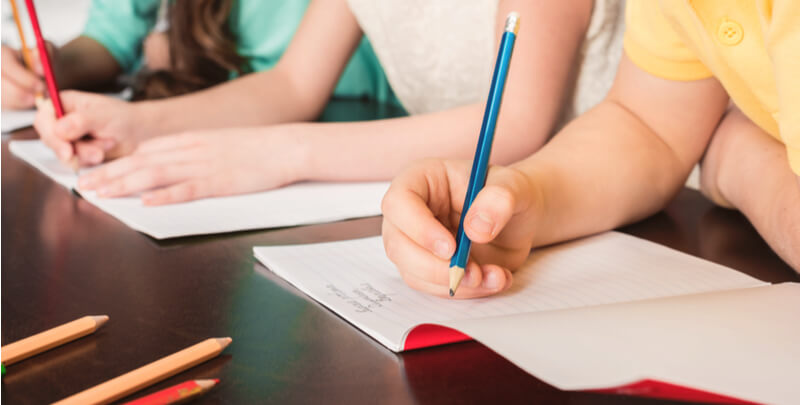Cost of living in Canada (2022)
A full breakdown on the cost of living in Canada.

Canada is well known for it’s incredible natural landscape, welcoming people and excellence in winter sports. What many people don’t consider when they think of the northern country, however, is the excellence of their education system. In fact, U.S. News & World Report ranked Canada as the #1 country in the world for public education in their 2017 rankings, above the United Kingdom (#2), Germany (#3), Australia (#4) and France (#5).
Somewhat uniquely, Canada does not have any centralized, federal department of education. Schools and schooling are the direct responsibility of individual states and territories thanks to the Constitution Act of 1867, which says “In and for each province, the legislature may exclusively make laws in relation to education.”
What that means is that schools across Canada’s 13 distinct jurisdictions (10 provinces and three territories) are sometimes vastly different in everything from school hours to required testing to grade level curriculum. Those policies have largely been designed to reflect the history, language and culture of each region. Overall, however, Canadian schools have a uniting belief in the importance of education, which has made the country’s school systems the best in the world.
Whether you’re starting a new job, planning to start a business or are moving to Canada for any reason, it’s important to understand how that system works and what you can expect for your family. This guide will provide you with an overview of the Canadian education so you and your family are ready for the transition.
While education structure varies from territory to territory, for this section and the remainder of this guide we’ll focus on the most common practices across the country.
Most children in Canada start school before or at age five in a kindergarten or nursery school, though it’s not compulsory for children to attend before age six. School is then mandatory until age 16, however, it’s highly unusual for students to leave school before they graduate at age 18.
Structure of school in Canada is as follows:
| School | Grade, Age, and Requirement |
|---|---|
| Preschool/ Kindergarten | Age 2-6, not required |
| Elementary School | Age 6-11, grades 1-6, compulsory |
| Junior High | Age 12-14, grades 7-9, compulsory |
| High School | Age 15-18, grades 10-2, not compulsory after age 16 |
Preschool in Canada refers to any education that happens before children reach first grade. That can include daycare programs for toddlers, as well as kindergartens for older children, which take a more academic approach childcare. Attending school at this level isn’t required of Canadian children, and pre-schools are typically private, meaning they come with a cost to parents.
Kindergarten, however, is usually public, and the majority of Canadian children attend. While it’s not required across the country, in some territories children are required to attend kindergarten when they reach age five.
There’s a wide range of preschool types available in the northern country, from non-profit cooperative schools to Catholic schools, other religious schools, community schools and private schools. Typically cooperative schools are the least expensive, however, they tend to require the most parent participation in the form of volunteering as teachers aides. Religious schools are also quite popular, however, they’re not for all families as they usually involve some level of religious curriculum. Private schools tend to be the priciest of the bunch, though they’re also considered to be the best. Montessori schools fall under the private school umbrella, teaching under the montessori philosophy of educating children based on their unique needs and interests.
While attending preschool isn’t required, it’s recommended - especially for expat families whose first language isn’t English (or French, in some provinces). Preschool helps children develop social and emotional skills, and can be a good first step in integrating new students into their local community. Preschool can also help parents who are new to Canada meet the other parents within their town, making it a great social opportunity for children and adults alike.
95% of of Canadian five year olds do attend a kindergarten, while 40% of four year olds attend preschool (though these numbers vary widely by jurisdiction). Registering your child for preschool is usually done at the school itself and typically involves a short questionnaire or a pre-enrollment interview.
It’s required for children to begin attending school in the first September after they turn five. This first stage of compulsory school is usually called elementary school, though in some provinces it may be referred to as primary school. This stage of education usually covers students from ages six to 11, in grades one to six, however, some schools extend elementary school to grade eight, or age 13.
Curriculum in elementary school varies widely from province to province, however, the typical schedule includes courses in reading, writing, math, history, geography, art, music, science and physical education. In some schools, French is also a compulsory subject, while in others it’s offered to elementary school students in the form of an “early French immersion programme,” but isn’t required. Other foreign languages don’t typically start until junior high.
Promotion from grade to grade within elementary schools is usually performance based, meaning students must pass yearly exams to advance. It’s not uncommon for children who are performing poorly to be held back, while it’s also fairly usual for gifted students to skip a year entirely.
Grading from elementary school onward is based on a simple percentage scale that looks very similar to the one commonly used in the United States:
| Grade | Percentage |
|---|---|
| A | 90-100 |
| B | 80-89.99 |
| C | 70-79.99 |
| D | 60-69.99 |
| F | < 60 |
Enrolling children in a public elementary school is usually a fairly simple process of notifying the relevant school and then submitting required documents, which typically include:
Junior high and high school, typically thought of as two parts to secondary education, are attended by children from age 12 to age 18, and is required until age 16. Children 16 and older may elect to leave school, however, this is relatively uncommon. While secondary school is sometimes the same physical location from grade seven onwards, it’s more common for schools to be divided by junior high, grades seven to nine, and high school, grades 10-12. The major outlier in this area is Quebec, where students attend high school from grade seven until grade 11, and then move to a general or vocational college for the next two years of their education.
Depending on the region, secondary schools either continue the core-subject curriculum that begins in primary school or divide students into academic “streams,” which prepare them more specifically for the vocational college or university - and ultimately the career - of their choosing.
Even where the streaming system is in place, it’s required for students to take core subjects, including English, math, science, health, physical education and social studies, for a certain number of years or credits. The exact number of years varies from province to province.
Starting in secondary school, students are allowed to begin choosing courses that interest them, known as electives. These classes are intended to help students better understand their interests and the possibilities for career paths that can stem from them. By the time students are in ninth grade, it’s not uncommon for electives to take up more than half of a student’s school day.
Beginning around the same time, career counseling becomes available to students. This career guidance is geared towards helping students choose appropriate electives that will ultimately get them ahead in their chosen educational path or vocation. Counselors are typically available to students throughout their high school experience and starting in grade 10 begin to focus on university planning. This is often broken into two distinct tracks: university, which focuses on academic subjects from biology to literature, and vocational programs, which focus on more career-oriented subjects. Those can include agriculture, farm management, business operations, home economics, child care or industrial education, which focuses on mechanical and manufacturing skills.
Secondary school is also the time when most students begin extracurricular activities, like sports. High schools typically have school sports teams, which are often seen as not only physical endeavors but an important part of the school’s social scene. Education, however, always takes precedence; in most schools students are barred from sports if they’re unable to maintain an acceptable grade point average.
Students who aren’t keen on athletics also take on extracurriculars, like clubs, musical groups, theater and dance, debate or model UN teams. Many schools also have opportunities like student newspapers, photography studios and yearbook teams. Canadian universities and employers both look for students who have participated in extracurriculars, so there’s some pressure for high schoolers to participate.
Registering students for public school at the secondary level is relatively simple, and mostly involves the parents submitting documents such as:
Some secondary schools also require students to participate in a pre-enrollment interview or counseling during their first semester to make make the adjustment to a new school easier on the student.
The school year in Canada is pretty similar to the one that’s followed in the United States. Classes run from early September until late June, for about 10 months total. The school year is usually divided into two semesters, though in some regions it’s based on quarters or trimesters.
Though it’s less common, there are schools that run year round, as well as ones that follow an adjusted term schedule that starts in August and ends in May. Regardless of which type of school is in your area, the administration notifies parents well ahead of time about term dates, vacations and holidays.
For elementary school students, the school day typically starts around 8:30am and runs until 3-3:30PM. Children get lunch and recess within their school day. Students in junior high school and high school usually have slightly shorter school days, from 8:30 to 2:30, which allows them to participate in after school activities like sports, extracurriculars and part time jobs.
As is the case in most places, class is held from Monday to Friday, and students are given weekends off.
Curriculum is typically year-long, though some Canadian schools break courses into two semesters, where four subjects are taught for longer periods in one half of the year, while the other four subjects are taught in the second half of the year. This system isn’t widely used, but some believe it’s more beneficial to the student in that longer class periods and fewer subjects at a time allow them to gain a better and more thorough understanding of each subject.
Public schools in Canada are free for residents, and are nearly universally excellent. While most English or French-speaking expat families choose to send their children to public school, some do choose a private education. Those public schools tend to come with hefty fees.
Typically boarding schools will be the most expensive option in private schooling, especially when the school is located in a major city like Toronto or Vancouver. By contrast, religious schools are usually the least expensive.
While it’s impossible to say exactly what private school will cost, it’s safe to estimate that a good boarding school will run parents between 40,000 CAD and CAD 50,000 per year. For Catholic and other religious schools, fees are usually closer to CAD 10,000 annually.
It’s also usually less expensive for children to attend private school in the younger grades than it is in the older ones. This is a supply and demand issue, wherein there are a plethora of options available in private schools for children in kindergarten through sixth grade, while that number greatly drops off for older students.
It’s important to remember that the cost of private school doesn’t stop at tuition. Students need uniforms and supplies, while many schools charge additional fees for sporting equipment and special events. Private schools also often look for monetary donations from parents.
Those costs can add up, and it’s even more expensive if you’re funding your child’s education from a foreign bank account when you consider international transfer fees. Those, however, can be eliminated by using Wise to get the real exchange rate and cut out expensive international bank transfer fees.
If you’re ready for your move to Canada, you can rest assured that your children will receive a world-class education, no matter what type of school you enroll them in. Between high academic achievement, plenty of extracurricular options and a nation-wide focus on quality education, Canada is one of the best countries in the world to relocate your family.
*Please see terms of use and product availability for your region or visit Wise fees and pricing for the most up to date pricing and fee information.
This publication is provided for general information purposes and does not constitute legal, tax or other professional advice from Wise Payments Limited or its subsidiaries and its affiliates, and it is not intended as a substitute for obtaining advice from a financial advisor or any other professional.
We make no representations, warranties or guarantees, whether expressed or implied, that the content in the publication is accurate, complete or up to date.

A full breakdown on the cost of living in Canada.

How does universal health care work in canada? Is it free? Find the answer to this and more questions in this handy guide.

Expecting a new baby can quickly become stressful if you’re a foreigner living abroad. Every country has its own complex healthcare system. As an expat, you...

The Great White North is a popular destination for tourists from all over the world, as well as expats. With its progressive politics, stunning natural...

Canada has beautiful natural scenery, universal healthcare and progressive politics. Read on to learn all about the pros and cons of living in Canada.

With universal healthcare, a socially progressive government, and easy access to all kinds of stunning natural scenery, it’s no wonder Canada is a country...